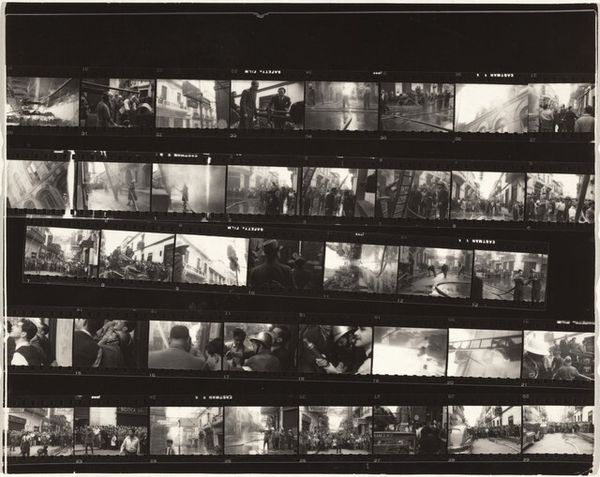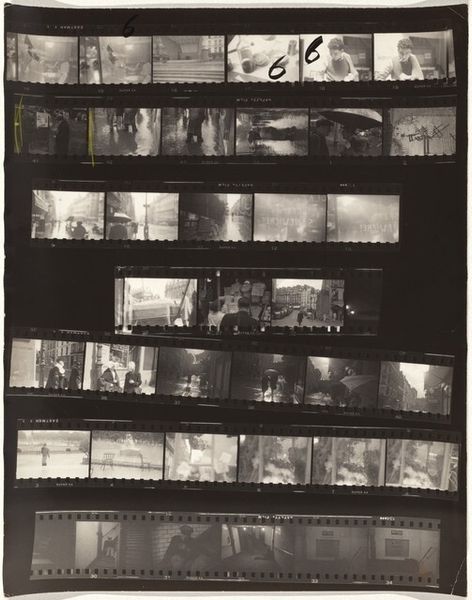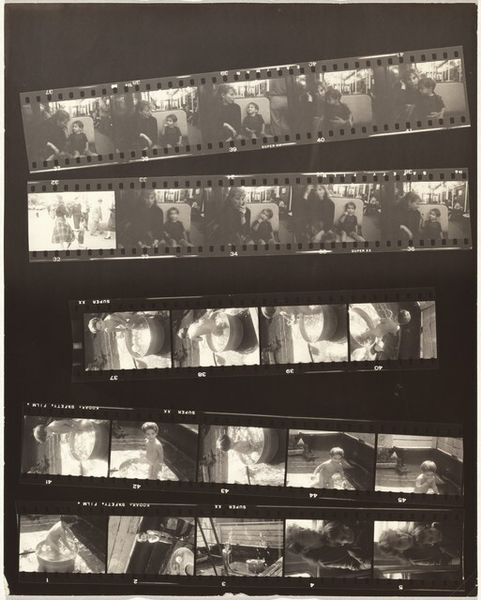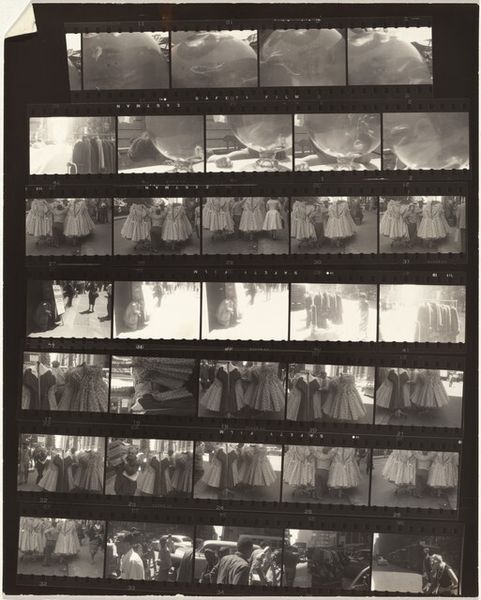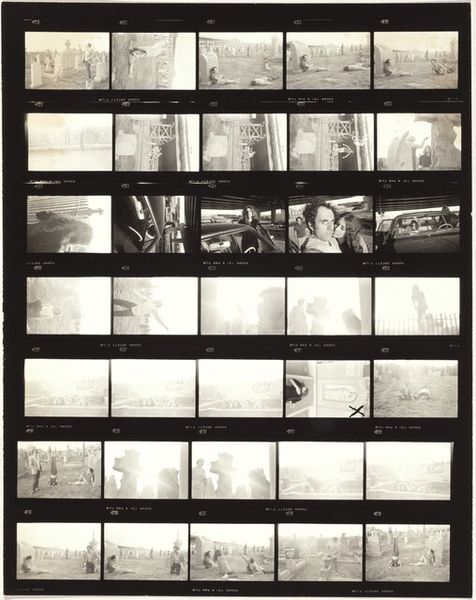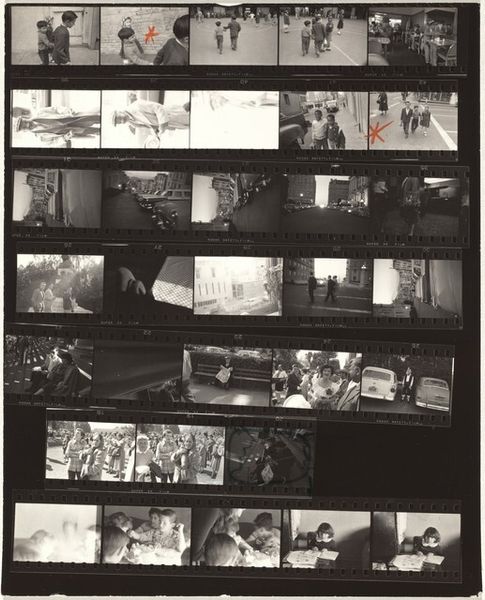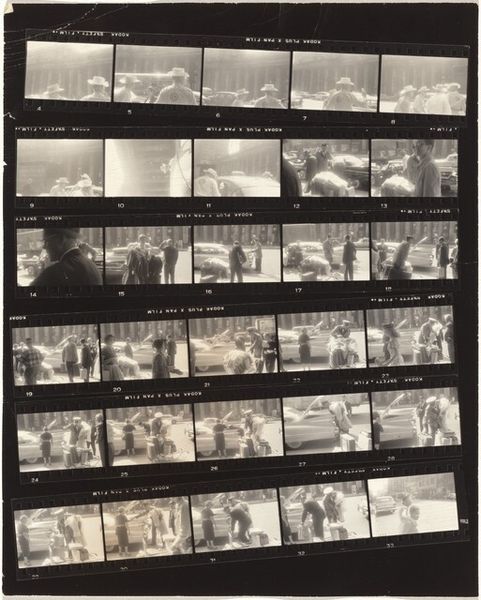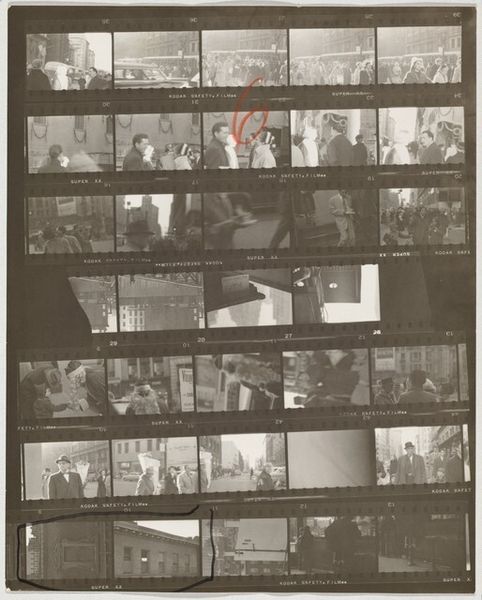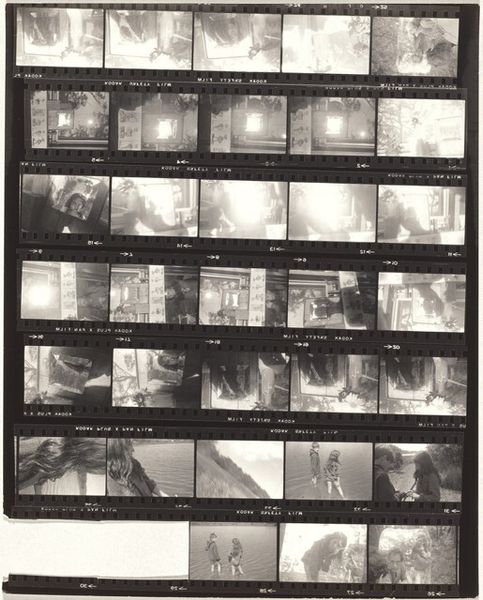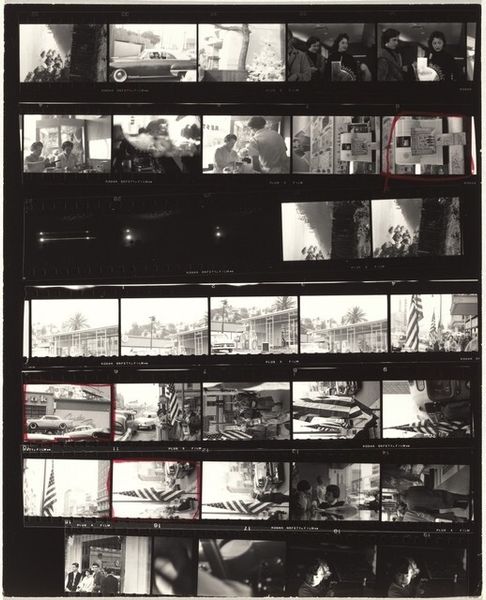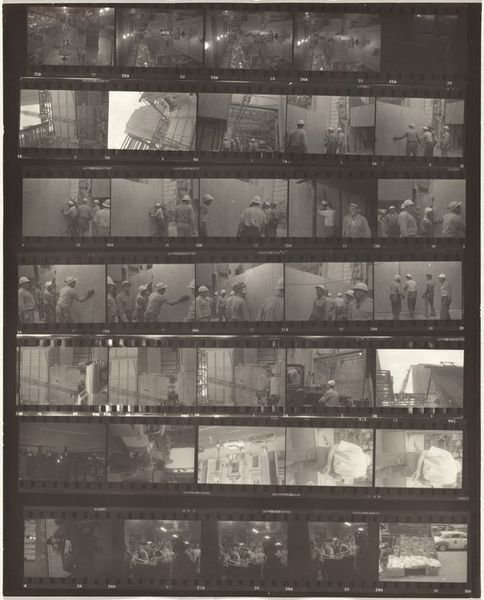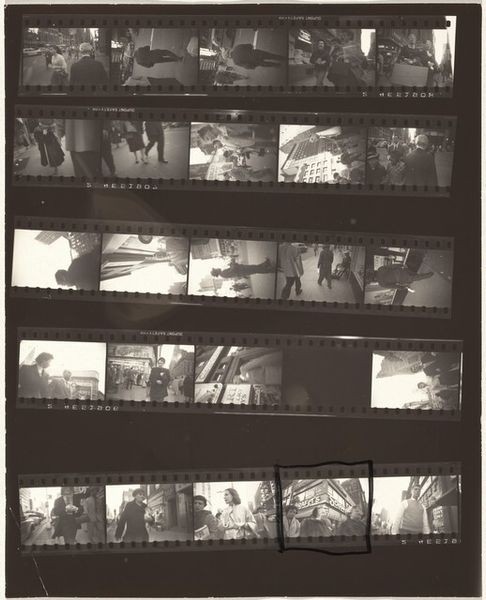
photography, gelatin-silver-print
#
film photography
#
street-photography
#
photography
#
gelatin-silver-print
#
cityscape
#
realism
#
monochrome
Dimensions: overall: 25.3 x 20.3 cm (9 15/16 x 8 in.)
Copyright: National Gallery of Art: CC0 1.0
Curator: Robert Frank’s gelatin silver print, “Early New York City 2,” made between 1952 and 1953, immediately gives me the impression of a photographic contact sheet, raw and full of urban encounters. What are your initial thoughts? Editor: It certainly presents itself as an array, doesn't it? My first thought is of surveillance, of observing and being observed. It is interesting how Frank frames everyday interactions and cityscapes—almost like evidence. Curator: The contact sheet format is really interesting; you immediately get a sense of the work involved. You see his choices, what he shot and, crucially, what he didn't select. Frank, initially a fashion photographer for Harper’s Bazaar, honed his craft with meticulous darkroom practice. Editor: Absolutely, and I find myself drawn to the perspectives he chooses – the tilted angles, the emphasis on seemingly random moments. It breaks from the idealised portrayals of urban life, leaning towards a grittier, more authentic reality. Think about the historical context—post-war America grappling with identity and societal shifts. Curator: What intrigues me, materially, is the darkroom printing of that era, how the tonality and contrast of each individual frame are skillfully achieved and considered within a broader constellation. There's a labour intensity here that demands attention. Editor: Precisely. Considering the societal forces, there's an inherent commentary on the anonymity and isolation within a bustling metropolis. The camera becomes a tool for questioning power structures, challenging the notion of a unified American narrative, especially with considerations of race and class in that specific period. Curator: Indeed. And while we consider the socioeconomic factors influencing this piece, we must recognize the role that the mass availability and consumption of camera equipment played in facilitating a more documentary form of visual art. Editor: So true—a perfect blend of materiality and sociopolitical consciousness! I think reflecting on “Early New York City 2” really asks us to question what narratives we’re accepting and whose stories are being silenced or foregrounded. Curator: It prompts a renewed look at the labour and decision making implicit to artistic production in dialogue with historical conditions, which for me is a vital take away.
Comments
No comments
Be the first to comment and join the conversation on the ultimate creative platform.
